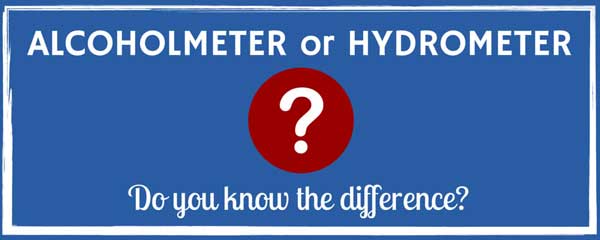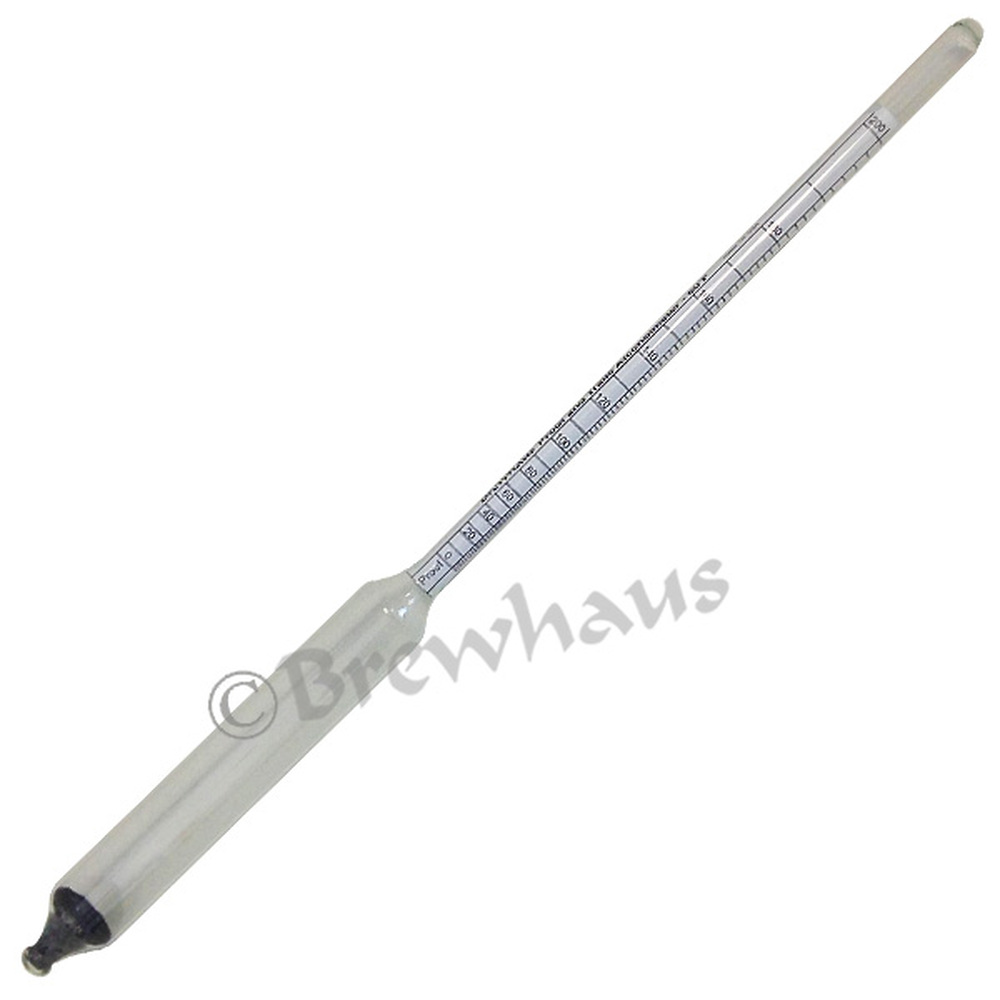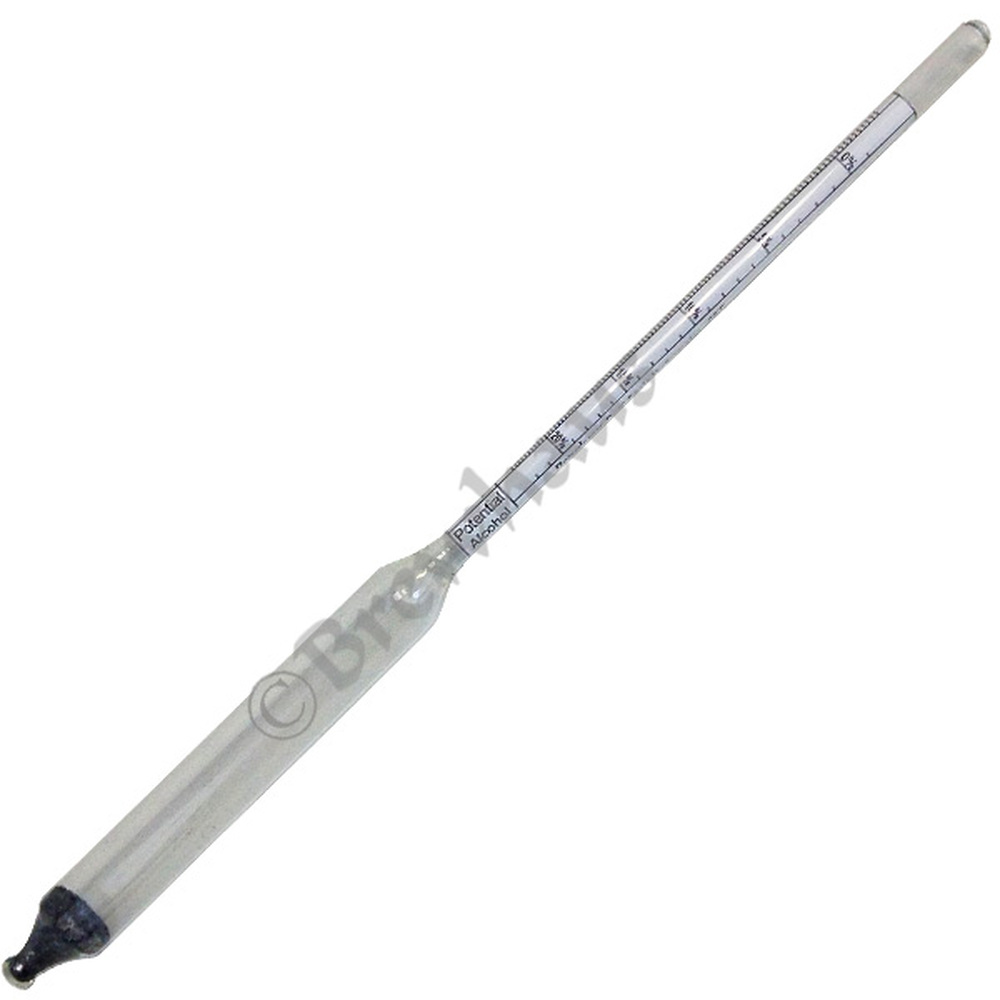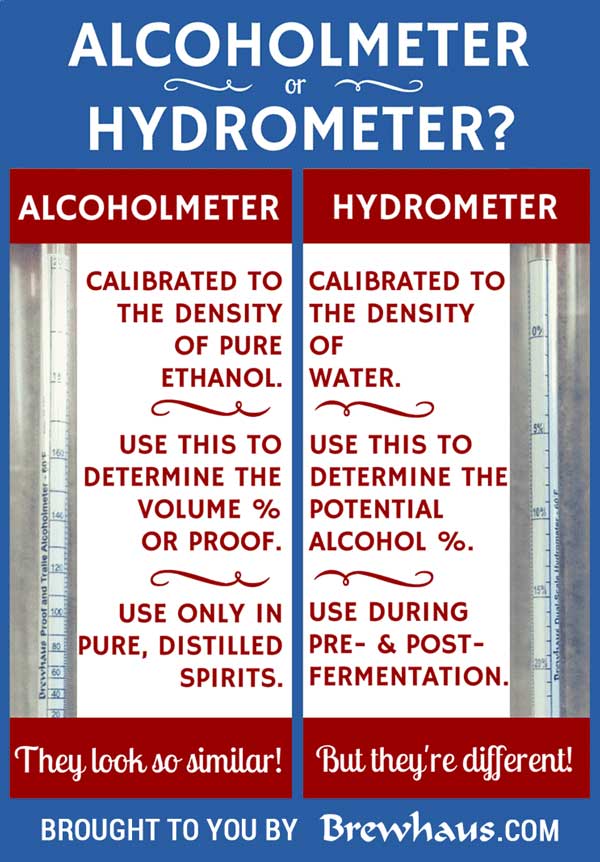Alcoholmeter or Hydrometer

A lot of people think that there’s a correlation between hydrometers and alcoholmeters because they look the same. They think they can just buy one meter, perform some calculations, and be able to get both types of readings from a single instrument. Unfortunately, this just isn’t true. Hydrometers and alcoholmeters are each calibrated to different density liquids, so although they may look the same, they are actually entirely different. Let’s explore why.
Alcoholmeter

This should only be used in pure, distilled spirits when you want to determine the volume % or proof of the spirit. It is calibrated to the density of pure ethanol. Simply float it in your spirit, and where the line crosses, there’s your % alcohol. Because water is thicker than alcohol, more water means that the liquid is thicker and the alcoholmeter can’t sink as deep.
Remember that this will only work on a pure, distilled spirit that contains no sugar or glycerin. Even some commercial products have a tiny bit of sugar or glycerin added just to give it a little bit of mouth feel. You may be surprised if you test a commercial vodka that’s supposed to be 40% and it registers at only 36%. This is because there’s a tiny bit of something in that vodka that they’re using to make it a little bit thicker, so the alcoholmeter doesn’t sink as deeply, giving an inaccurate reading.
Hydrometer

This is used to determine potential alcohol % during pre-fermentation and post-fermentation. It is calibrated to the density of water. Pure water means that it will float at 1.000. The more sugar that you add, the thicker the mixture gets, and the harder it is to sink. Let’s say that you’re doing sugar water and turbo yeast. Once you mix your sugar and water, it’s much thicker and the hydrometer will float higher in the liquid. As fermentation occurs, and as that sugar gets converted into alcohol, the liquid becomes considerably thinner, and the hydrometer sinks in deeper.
Hydrometer readings can also vary depending on temperature, so the temperature that that instrument is calibrated to is listed right on the side. Think about how molasses responds to different temperatures: the warmer it gets, the thinner it is in consistency, so the hydrometer would sink deeper.
Conclusion I hope this comparison helped you better understand the differences between an alcoholmeter and a hydrometer. They may look nearly identical, but they’re not interchangeable. The more you know!









Comments